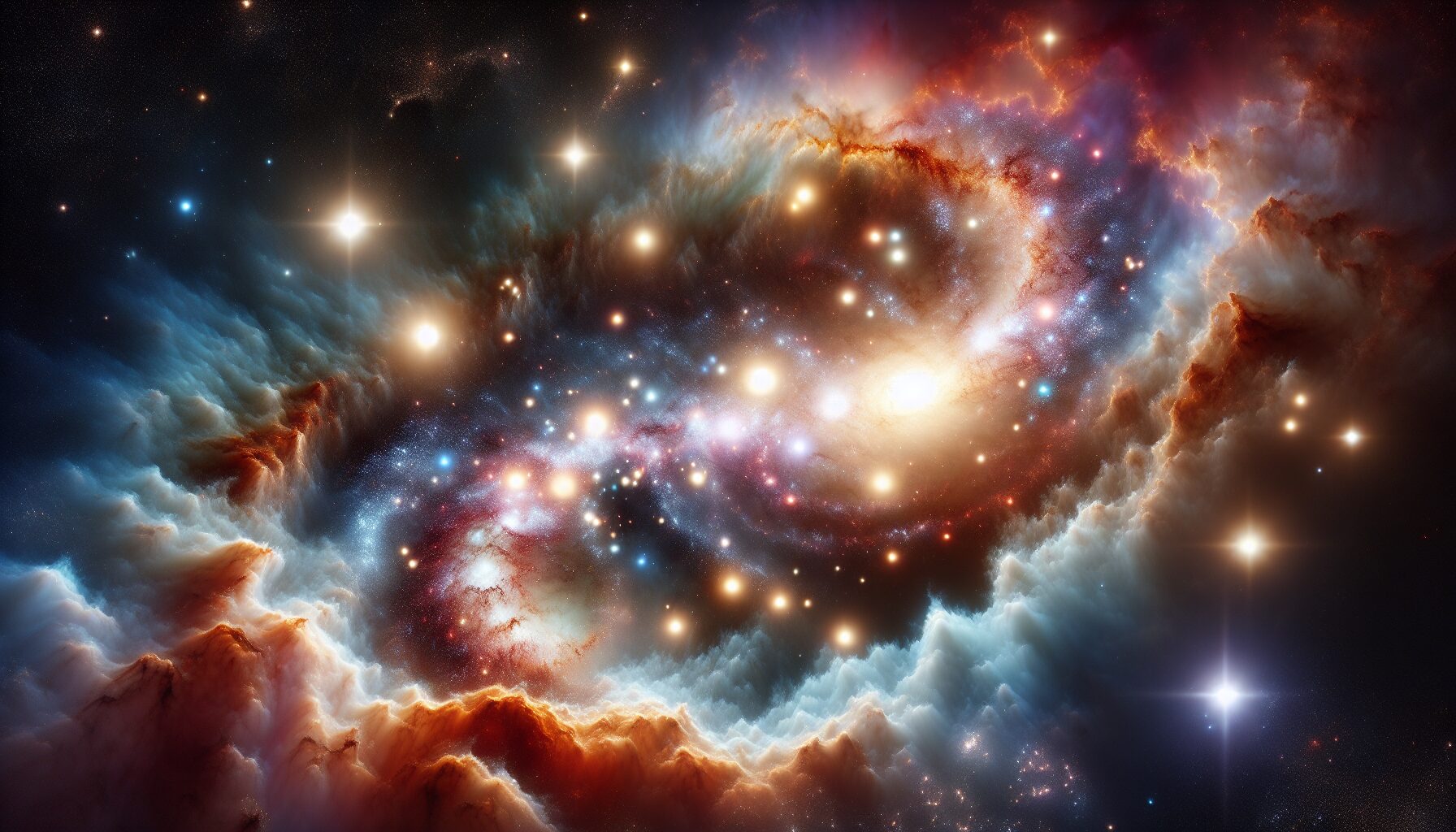The universe, vast and mysterious, serves as a celestial canvas where new galaxies come to life. Central to this cosmic masterpiece are the enigmatic regions known as star nurseries or stellar nurseries. These are the cosmic cradles where stars are born, illuminating the infinite darkness with their radiant light.
The Enigma of Stellar Nurseries
Stellar nurseries are immense clouds of dust and gas, primarily composed of hydrogen, where stars are formed through the gravitational collapse of material within these regions. As these clouds collapse, pockets of dense matter heat up, eventually sparking nuclear fusion—the birth cry of a new star. This process can take millions of years, slowly sculpting the chaos into the order that binds the galaxies together.
Iconic Star-Forming Regions
Throughout the universe, numerous star-forming regions capture the fascination of astronomers and the public alike. These include:
- The Orion Nebula: Perhaps the most famous stellar nursery, the Orion Nebula is visible to the naked eye as a fuzzy patch in the Orion constellation. Home to thousands of young stars, this dynamic region offers critical insights into the star formation process.
- The Eagle Nebula: Known for the iconic “Pillars of Creation,” this nebula mesmerizes with towering columns of gas and dust. The Hubble Space Telescope’s images of this region have become symbolic of cosmic creation.
- The Carina Nebula: A lesser-known gem, the Carina Nebula is a violent star-forming region with some of the most massive stars ever discovered, including Eta Carinae, a stellar behemoth expected to explode as a supernova.
The Role of Nebulae in Galaxy Formation
These stellar nurseries don’t just create individual stars; they play a crucial role in the formation of entire galaxies. Freshly formed stars within these nebulae can eventually drift apart due to stellar winds and pressure from nearby supernovae. This process disperses elements throughout the universe, seeding future star systems and providing the building blocks for planetary formation.
The Process of Star Formation
Understanding how stars form provides vital information about the lifecycle of galaxies. When a part of a nebula becomes dense enough, gravitational forces exceed the internal pressure of the gas, causing it to collapse. As it collapses, the material at the center heats up, becoming a protostar. Once the core temperature is high enough (around 10 million Kelvin), nuclear fusion ignites, and a star is born.
“We find stars forming in the densest parts of molecular clouds and sometimes very hurriedly,” says Rebecca Oppenheimer, an astrophysicist at the American Museum of Natural History. “This phenomenon, called ‘triggered star formation,’ can involve shock waves from massive stars pushing on nearby clouds.” Learn more at AMNH.
Galaxies: The Grand Assemblies of Stars
While individual stars illuminate the darkness, galaxies are grand assemblies composed of billions of these stars, along with nebulae and dark matter. The Milky Way is home to our solar system and provides a local neighborhood from which humans can study the intricacies of galactic evolution.
Galaxies are continuously changing—merging with other galaxies, undergoing bursts of new star formation, and sometimes being torn apart by gravitational forces. Studying these processes helps astronomers understand where galaxies come from and how they evolve over billions of years.
Looking to the Future
Telescopes and space missions, such as the James Webb Space Telescope and ALMA (Atacama Large Millimeter/submillimeter Array), are expanding humanity’s ability to study these iconic star nurseries in unprecedented detail. These tools are allowing astronomers to peer into regions previously obscured by dense clouds of dust, unraveling the mysteries of star and galaxy formation.
“The James Webb Space Telescope will peer into those dusty star factories and uncover stars in the process of forming,” says Eric Smith, Program Scientist for the Webb telescope. Learn more about the James Webb Space Telescope.
The Continuing Creation of the Cosmos
In the grand scheme of the universe, stellar nurseries play an indispensable role in the continuity of matter and energy. Through their relentless process of creation and destruction, they ensure that the universe remains dynamic and ever-evolving, birthing new stars, planets, and galaxies—a timeless dance of creation that has persisted for nearly 14 billion years.
As we continue exploring the universe, these cosmic cradles remind us of the delicate balance between chaos and order, and the endless possibilities yet to be uncovered among the stars.
